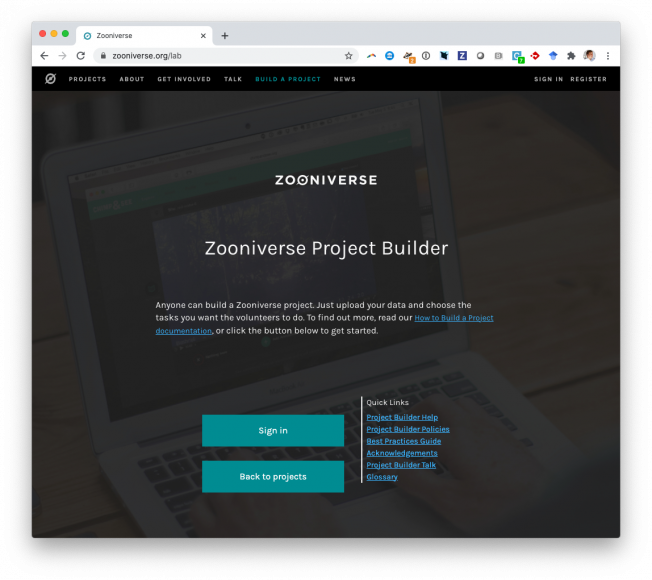Galaxy Zoo: A Catalog of Overlapping Galaxy Pairs for Dust Studies
ArXiv 1211.6723 (2012)
Abstract:
Analysis of galaxies with overlapping images offers a direct way to probe the distribution of dust extinction and its effects on the background light. We present a catalog of 1990 such galaxy pairs selected from the Sloan Digital Sky Survey (SDSS) by volunteers of the Galaxy Zoo project. We highlight subsamples which are particularly useful for retrieving such properties of the dust distribution as UV extinction, the extent perpendicular to the disk plane, and extinction in the inner parts of disks. The sample spans wide ranges of morphology and surface brightness, opening up the possibility of using this technique to address systematic changes in dust extinction or distribution with galaxy type. This sample will form the basis for forthcoming work on the ranges of dust distributions in local disk galaxies, both for their astrophysical implications and as the low-redshift part of a study of the evolution of dust properties. Separate lists and figures show deep overlaps, where the inner regions of the foreground galaxy are backlit, and the relatively small number of previously-known overlapping pairs outside the SDSS DR7 sky coverage.Planet Hunters: A Transiting Circumbinary Planet in a Quadruple Star System
ArXiv 1210.3612 (2012)
Abstract:
We report the discovery and confirmation of a transiting circumbinary planet (PH1b) around KIC 4862625, an eclipsing binary in the Kepler field. The planet was discovered by volunteers searching the first six Quarters of publicly available Kepler data as part of the Planet Hunters citizen science project. Transits of the planet across the larger and brighter of the eclipsing stars are detectable by visual inspection every ~137 days, with seven transits identified in Quarters 1-11. The physical and orbital parameters of both the host stars and planet were obtained via a photometric-dynamical model, simultaneously fitting both the measured radial velocities and the Kepler light curve of KIC 4862625. The 6.18 +/- 0.17 Earth radii planet orbits outside the 20-day orbit of an eclipsing binary consisting of an F dwarf (1.734 +/- 0.044 Solar radii, 1.528 +/- 0.087 Solar masses) and M dwarf (0.378+/- 0.023 Solar radii, 0.408 +/- 0.024 Solar masses). For the planet, we find an upper mass limit of 169 Earth masses (0.531 Jupiter masses) at the 99.7% confidence level. With a radius and mass less than that of Jupiter, PH1b is well within the planetary regime. Outside the planet's orbit, at ~1000 AU,a previously unknown visual binary has been identified that is likely bound to the planetary system, making this the first known case of a quadruple star system with a transiting planet.The Milky Way Project First Data Release: A bubblier Galactic disc
Monthly Notices of the Royal Astronomical Society 424:4 (2012) 2442-2460
Abstract:
We present a new catalogue of 5106 infrared bubbles created through visual classification via the online citizen science website 'The Milky Way Project'. Bubbles in the new catalogue have been independently measured by at least five individuals, producing consensus parameters for their position, radius, thickness, eccentricity and position angle. Citizen scientists - volunteers recruited online and taking part in this research - have independently rediscovered the locations of at least 86 percent of three widely used catalogues of bubbles and Hii regions whilst finding an order of magnitude more objects. 29 percent of the Milky Way Project catalogue bubbles lie on the rim of a larger bubble, or have smaller bubbles located within them, opening up the possibility of better statistical studies of triggered star formation. Also outlined is the creation of a 'heat map' of star formation activity in the Galactic plane. This online resource provides a crowd-sourced map of bubbles and arcs in the Milky Way, and will enable better statistical analysis of Galactic star formation sites. © 2012 The Authors Monthly Notices of the Royal Astronomical Society © 2012 RAS.Galaxy Zoo: Bulgeless Galaxies With Growing Black Holes
ArXiv 1207.419 (2012)
Abstract:
The growth of supermassive black holes appears to be driven by galaxy mergers, violent merger-free processes and/or `secular' processes. In order to quantify the effects of secular evolution on black hole growth, we study a sample of active galactic nuclei (AGN) in galaxies with a calm formation history free of significant mergers, a population that heretofore has been difficult to locate. Here we present an initial sample of 13 AGN in massive (M_* >~ 1e10 M_sun) bulgeless galaxies -- which lack the classical bulges believed inevitably to result from mergers -- selected from the Sloan Digital Sky Survey using visual classifications from Galaxy Zoo. Parametric morphological fitting confirms the host galaxies lack classical bulges; any contributions from pseudobulges are very small (typically < 5%). We compute black hole masses for the two broad-line objects in the sample (4.2e6 and 1.2e7 M_sun) and place lower limits on black hole masses for the remaining sample (typically M_BH >~ 1e6 M_sun), showing that significant black hole growth must be possible in the absence of mergers or violent disk instabilities. The black hole masses are systematically higher than expected from established bulge-black hole relations. However, if the mean Eddington ratio of the systems with measured black hole masses (L/L_Edd = 0.065) is typical, 10 of 13 sources are consistent with the correlation between black hole mass and total stellar mass. That pure disk galaxies and their central black holes may be consistent with a relation derived from elliptical and bulge-dominated galaxies with very different formation histories implies the details of stellar galaxy evolution and dynamics may not be fundamental to the co-evolution of galaxies and black holes.Galaxy Zoo: Quantifying Morphological Indicators of Galaxy Interaction
ArXiv 1206.502 (2012)



